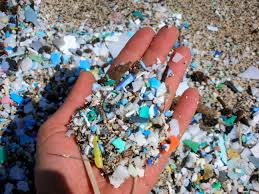 Fish are “stuffing themselves” on plastic, but scientists are still trying to figure out what effect that might have on those of us who eat seafood.
Fish are “stuffing themselves” on plastic, but scientists are still trying to figure out what effect that might have on those of us who eat seafood.
While the actual plastic bits might be in the stomachs of fish, the chemical used to the manufacture the plastic “may migrate into fish flesh and thus edible parts of seafood”. The Washington Post.
As much as 12.7m metric tons of plastic enter the world’s oceans each year. According to the World Economic Forum, by 2050 there could be more plastic in the sea than fish.
It’s clear that waste ends up in marine habitats from many different sources, from inefficient industrial waste management to plastic microfibers washed out of our clothing. But it’s less clear what the end result might be for human health.
Fish appear to be “stuffing themselves” on plastic, which is coated in bacteria and algae, mimicking their natural food sources. Mistaking the small particles for a high energy snack, fish gobble up most small plastic particles, according to recent research.
Much of that plastic ends up in the guts of fish and other marine life, and ultimately on our dinner table.
While the actual plastic bits might be in the stomachs of fish, the chemical used to manufacture the plastic “may migrate into fish flesh and thus edible parts of seafood”, explains Rolf Halden, director of Arizona State University’s Center for Environmental Security.
Those chemicals that have “hitched a ride on plastics” may sometimes be found “in accumulated concentrations that may be harmful to humans”, says Halden.
In a study published in 2015, marine researchers bought fish at public markets in California and Indonesia and examined their stomach contents. Around one in four fish at markets in both locations had plastic particles in their guts.
